-
About
- About Listly
- Community & Support
- Howto
- Chrome Extension
- Bookmarklet
- WordPress Plugin
- Listly Premium
- Privacy
- Terms
- DMCA Copyright
- © 2010-2025 Boomy Labs

Listly by emijoy17
Here is a list of orchestral instruments and their seating arrangement within the orchestra! We will also be studying famous orchestral works throughout the eras! Baroque: Handel's Water Music Suite No. 1 in F, HWV 348 : Hornpipe - Classical: Mozart's Eine kleine Nachtmusik - Romantic: Berlioz Symphonie Fantastique - 20th Century: Copland's Appalachian Spring
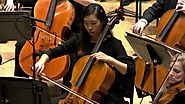
This is Appalachian Spring by Aaron Copland (1900-1990). This is a great example of 20th Century music!
Rationale: I chose this because I want students to get an idea of how orchestral music sounded in the more modern era compared to earlier orchestral music. I tried to choose something that could be somewhat recognizable so that's why I chose Appalachian Spring by Copland.
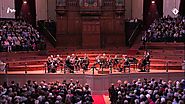
A very famous work of Mozart - a composer of the Classical Era - note the size of the orchestra!
Rationale: I chose this because it shows both visually and audibly the difference of orchestra between the Classical and Romantic era. This is a very famous piece so I want students to be able to distinguish that this came from the 18th century!
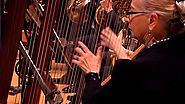
Berlioz: Symphonie fantastique - (please start video at 43:15) this is the fifth movement performed by the Chicago Symphony Orchestra, this is an example of program music, the music is meant to tell a story! In this fifth movement the composer describes a witches' gathering; again, not the size of this orchestra compared to the others!
Rationale: I chose this because of my description - it is one of the best examples of program music out there. Symphonie Fantastique was practically the birth of program music - also a GREAT representation of the grand structure of the Romantic period orchestra!
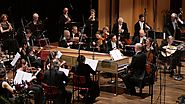
The Hornpipe from Handel's Water Music (HWV 349), performed by the FestspielOrchester Göttingen, Laurence Cummings, director. 4K video from the Gala Concert ...
Rationale: This is my Baroque example of an orchestra, what I love most about this and the main reason I chose this was because the orchestra uses period instruments. This orchestra is also the correct size for the Baroque era and does not have a standing conductor; they have a leader at the harpsichord. I chose this group because they play a recognizable piece with historically accurate instruments!

This link will show you the development of orchestra seating over the eras! No, it has not been the same throughout all of history!
Rationale: I chose this because it is interactive and visually shows how the orchestra changed and developed over the eras.
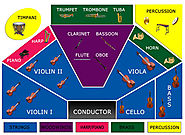
Use this as a basic guide for today's orchestra!
Rationale: this is a good basic visual of the orchestra that can be a quick reminder for students where instruments belong in the orchestra.

Click on this link to learn about the different instruments of the orchestra and how they function, you don't have to watch all the videos, watch what you are interested in!
Rationale: I chose this because it goes deeper into what each instrument of the orchestra does! Students can watch a video of an actual professional who knows all the ins-and-outs of their instrument.
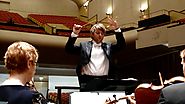
What's up with the guy waving his arms in the front? Watch this video to find their purpose!
Rationale: A lot of times we overlook teaching about what the conductor is there for when it is actually rather important so I want to make sure the students know that there is a purpose to the guy with a stick in the front.

A community in Paraguay is turning their trash into treasure, proving that beauty and creativity are all a matter of perspective. Read this for extra inspiration!
Rationale: This is something a little more fun that I found. I want students to embrace creativity when they see this group of students like them making their own instruments I think it could inspire them to appreciate what we have but also inspire them to create using what they have - no matter how little they may have.

This is a link to play a fun game of identifying instruments! Have fun!
Rationale: This game is really cute but will challenge students who are learning what each instrument sounds like and looks like. I like that it is interactive and then at the end plays a song for the student.